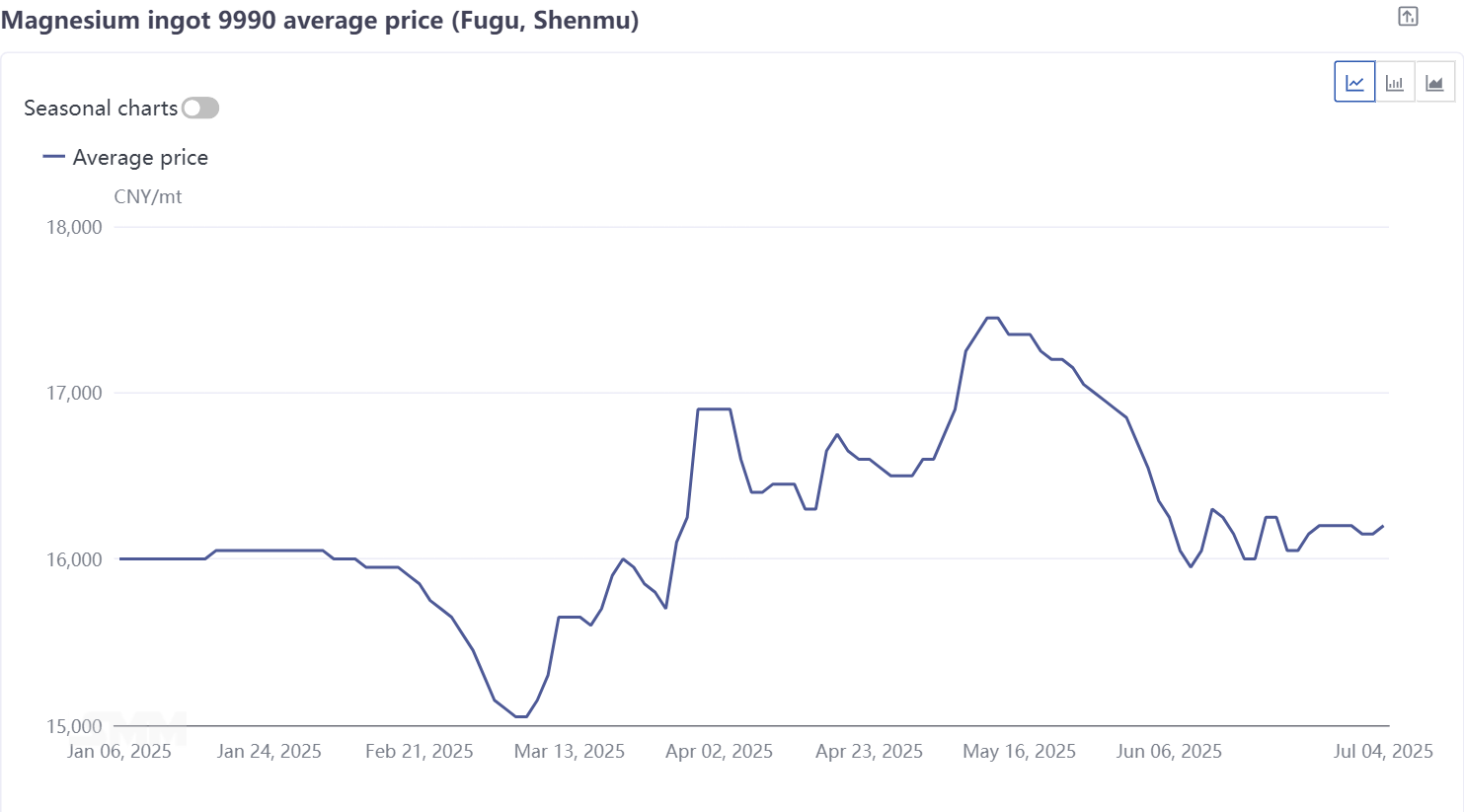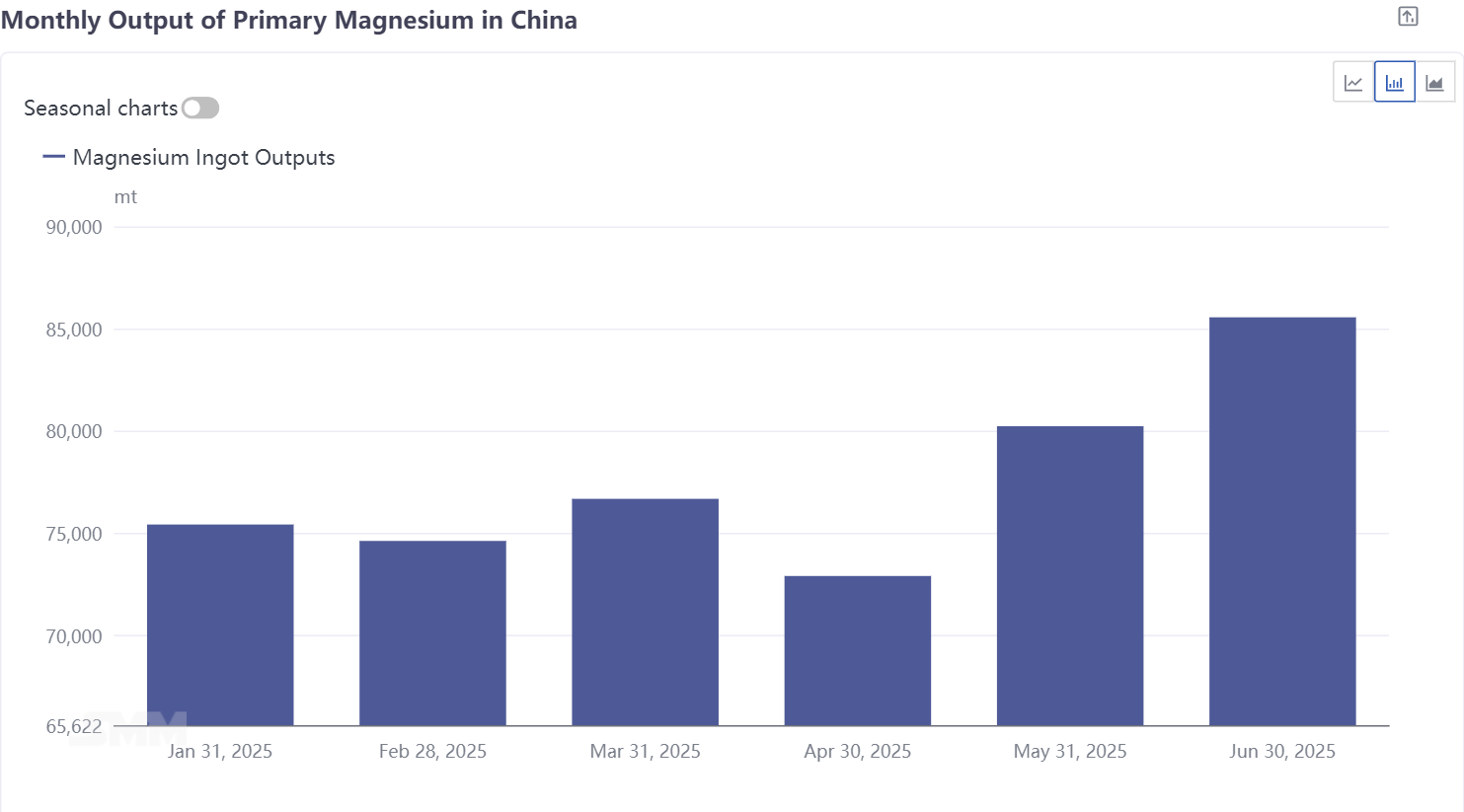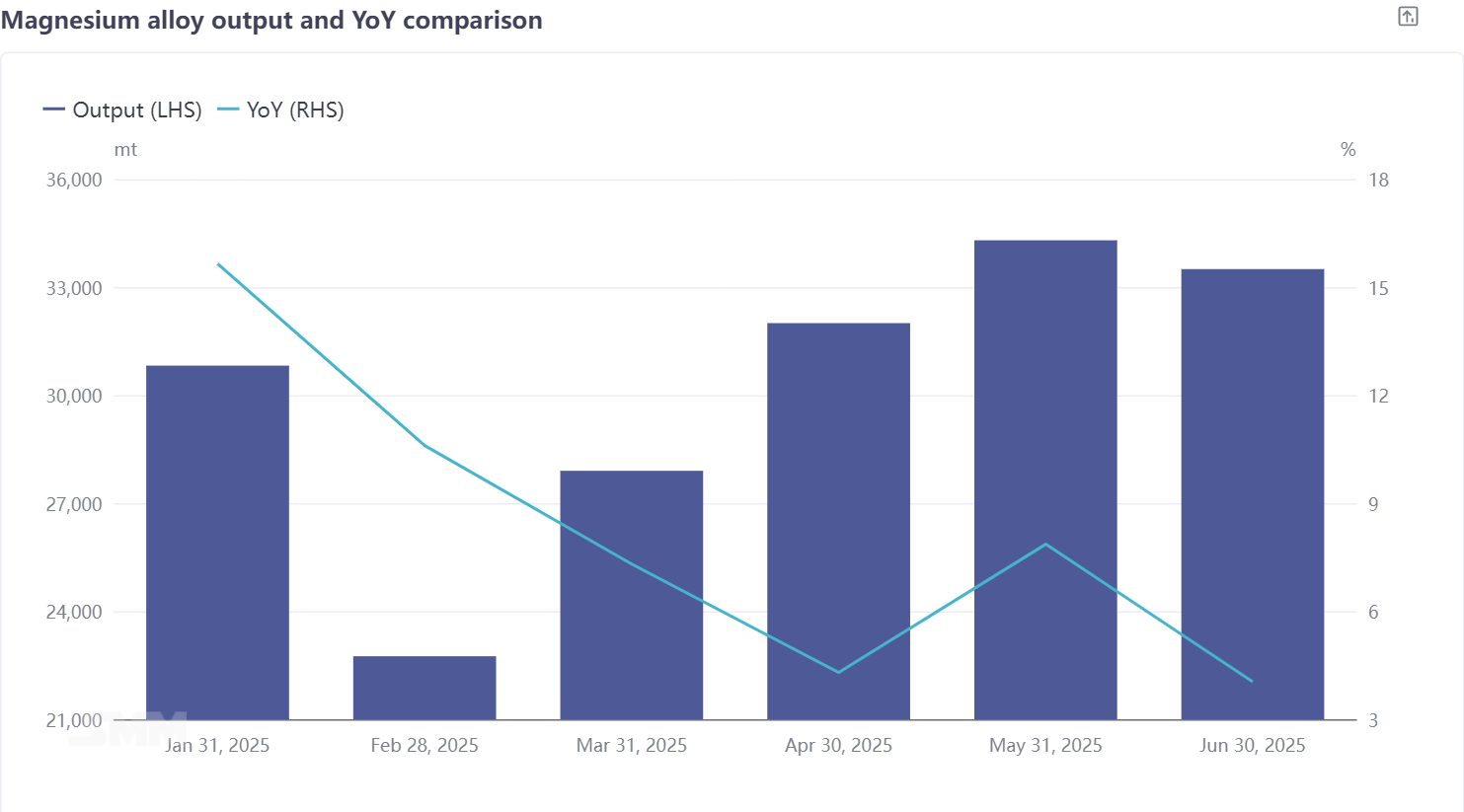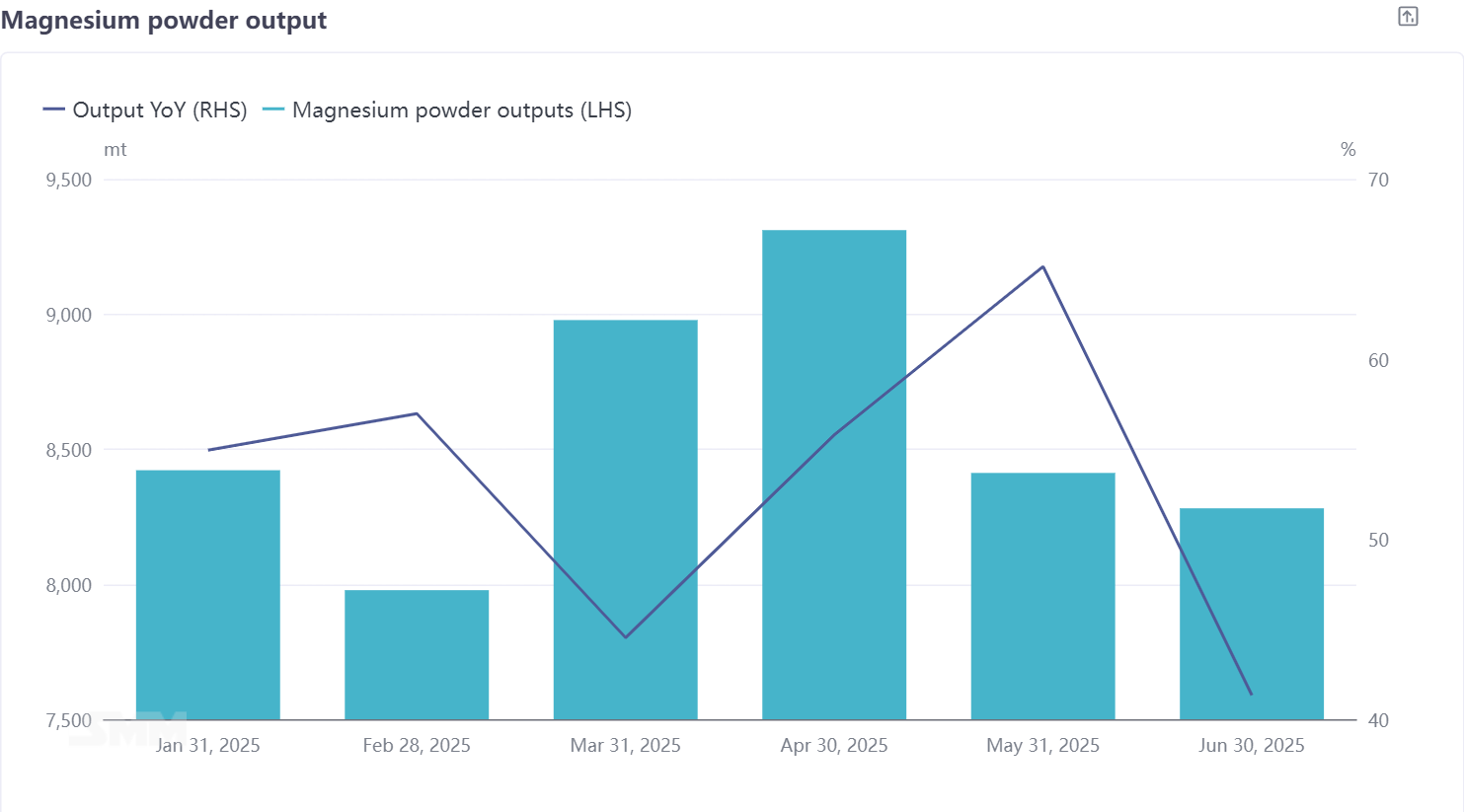






In early June, as magnesium prices continued to climb to a high level, buyers gradually returned to rationality. Coupled with small magnesium plants selling at low prices one after another, the center of magnesium prices gradually moved downward. Moreover, as news of magnesium plant resumptions gradually spread, the increased supply of magnesium ingots was likely to further increase inventory pressure on magnesium smelters, reopening the downward channel for magnesium prices, which fell to 15,950 yuan/mt. In mid-to-late June, downstream traders entered the market in concentrated numbers for procurement, providing demand support. Magnesium prices rebounded several times, but due to factors such as lower order prices in the early period, magnesium prices fluctuated rangebound in mid-to-late June.

China's primary magnesium production in June 2025 increased by 6.63% MoM. Domestic primary magnesium producers had varying production increases and decreases in June. Overall, nationwide magnesium ingot production increased MoM. The increase in this month's production was mainly due to the following two reasons: Firstly, affected by the decline in raw material prices, the profit margins of primary magnesium smelters effectively improved. Magnesium ingot smelters that had previously halted production due to cost losses gradually resumed primary magnesium production in early June, leading to an increase in primary magnesium production in June. Secondly, two primary magnesium smelters in Xinjiang that had previously undergone maintenance gradually resumed production, which significantly boosted primary magnesium production. The decrease in this month's primary magnesium production was mainly due to the following reason: Two primary magnesium smelters in Shaanxi underwent maintenance or production cuts, resulting in a decrease in primary magnesium production of approximately 1,500 mt in June due to this impact. Overall, the increased production of primary magnesium nationwide was greater than the decreased production, with nationwide primary magnesium production increasing by 6.63% MoM in June.
According to the SMM survey, currently, four primary magnesium smelters in major producing areas have reported production resumption plans for July, with one having recently started production. The specific resumption times for other primary magnesium smelters are undetermined, and SMM will continue to track. Overall, domestic magnesium ingot smelters' production in July is likely to increase, with expected slight MoM growth in domestic primary magnesium production in July.

China's magnesium alloy production in June 2025 decreased MoM. Domestic magnesium alloy producers' production continued to increase in June, with the magnesium alloy market showing a fluctuating development trend in recent times. As major producers intensified market promotion efforts, the cost-performance advantage of magnesium alloy materials gradually gained industry recognition, prompting some die-casting enterprises to begin adjusting their production processes and gradually replacing aluminum alloy with magnesium alloy. Although this material substitution trend has not yet formed large-scale orders, it has driven a mild increase in overall demand. It is worth noting that June, as a traditional peak production season for the die-casting industry, directly boosted short-term demand for magnesium alloy. However, as seasonal factors changed, the market began to exhibit off-season characteristics, with procurement volumes pulling back recently. Based on current market supply and demand changes, the industry generally expects magnesium alloy production to moderately decrease in July.

According to data from SMM, China's magnesium powder production in June 2025 decreased by 1.65% MoM. The domestic magnesium powder market in June exhibited characteristics of structural adjustment. Despite the dual pressures from both domestic and external demand faced by the industry as a whole—with the domestic consumer market remaining sluggish and the procurement demand from international steel companies shrinking, leading to a continuous decline in export orders for several months—market differentiation was evident. Some small and medium-sized producers had voluntarily reduced their capacity utilization rates, while leading producers, leveraging their advantage of concentrated orders, had instead increased their operating levels. This dynamic of one declining while the other rises resulted in a narrower-than-expected decline in total production for the month. With the end of the traditional peak season, the market generally expects demand to weaken further, and the industry is likely to face even greater production cut pressures in July.

For queries, please contact Lemon Zhao at lemonzhao@smm.cn
For more information on how to access our research reports, please email service.en@smm.cn